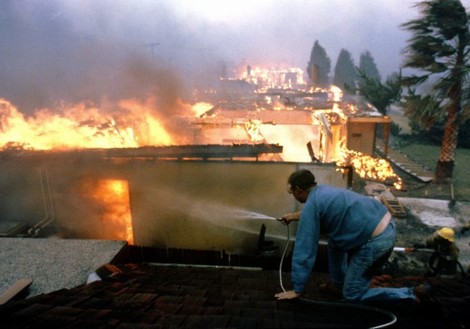Your podcast discovery platform
Curious minds select the most fascinating podcasts from around the world. Discover hand-piqd audio recommendations on your favorite topics.

piqer for: Health and Sanity Boom and bust Climate and Environment
Melissa Hutsell is an award-winning freelance journalist with a deep rooted passion for both community and international journalism. She was born and raised in Northern California, and has lived, studied, worked, and traveled in more 20 different countries. Melissa holds a Master's degree in Global Journalism from City University London, as well as degrees in Journalism and Globalization from Humboldt State University. Though she covers various topics as both a writer and editor, she specializes in business and cannabis journalism.
Built To Burn: Addressing Wildfire Culture In California
When we think of the health and sanity of our communities, we don’t often think about infrastructure. The series of reports by 99% Invisible sheds light on the importance of infrastructure in California’s new normal – yearlong fire seasons.
Over the past few years, the state has been facing the most devastating fires in its history, alone. There are many reasons for this, fire scientist Jack Cohen explains, infrastructure being one of them.
When most people think of wildfires, they think of a tsunami of flames coming toward them. But in one of California’s worst fires – the Panorama Fire – people’s homes burned long before the fire had reached their neighborhood.
Embers settled on roofs, many of which were made from wood, causing them to set aflame. While the idea of flammable roofs wasn’t new, explains the host, “it was a big moment. Because when [Cohen] shifted his focus to the design of the homes, suddenly he found himself wondering if we were framing the whole problem of wildfire in the wrong way.”
Fire wasn’t always a bad thing. Before colonization, fires commonly burned throughout the U.S. as Native Americans set fires to regenerate plants and habitats. But settlers brought the fear of fire with them: they put fires out, which over time caused forests to get bigger, and more flammable.
Cohen questioned whether we should battle the flames or the fuel sources, so he looked at the relationship between fire and home destruction. He found that embers – like the ones that burned homes in the Panorama Fire – could become less threatening if defensive “home ignition zones” were created.
The concept is effective, but the culture is hard to shift. Embracing this idea would mean focusing less on controlling fires, and more on preventing their level of destruction. As the host puts it: “With climate change, the fire season is only getting longer. […] When you’re that busy running around putting out fires – literally – it’s hard to focus on how to prevent them from being so destructive in the first place.”
Stay up to date – with a newsletter from your channel on Health and Sanity.
